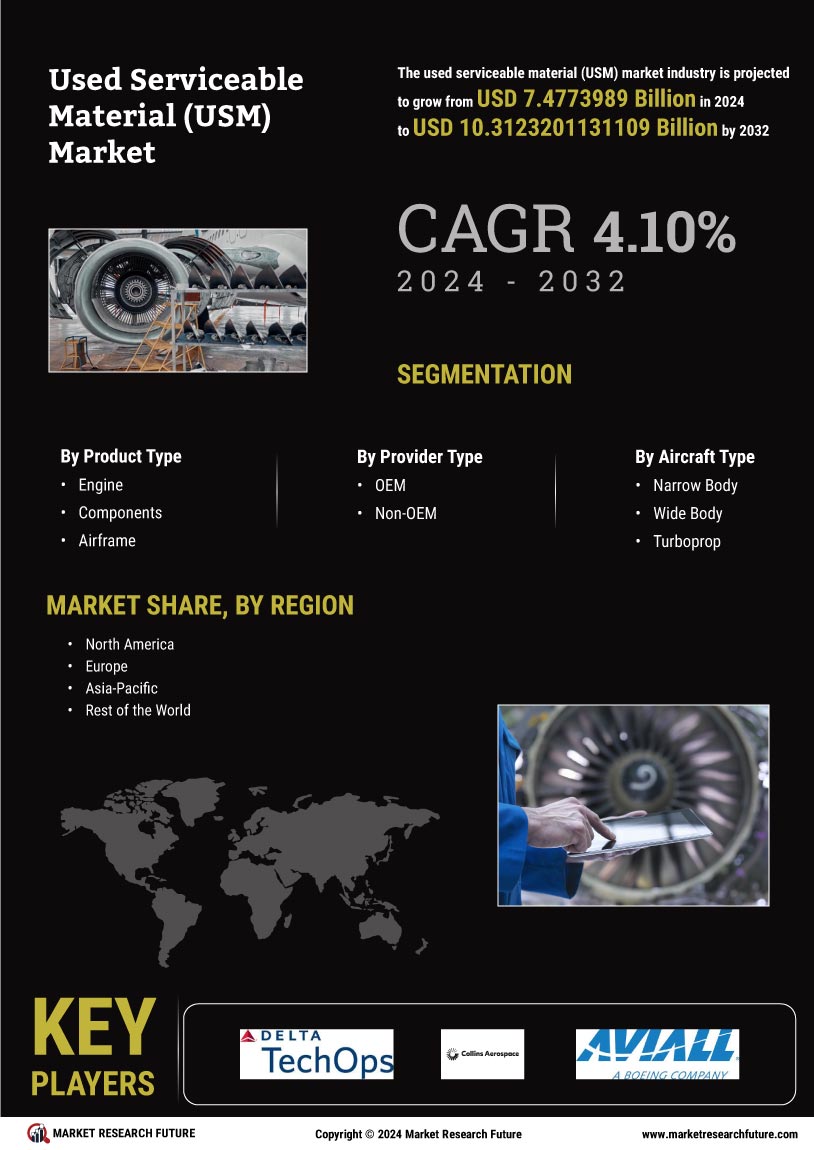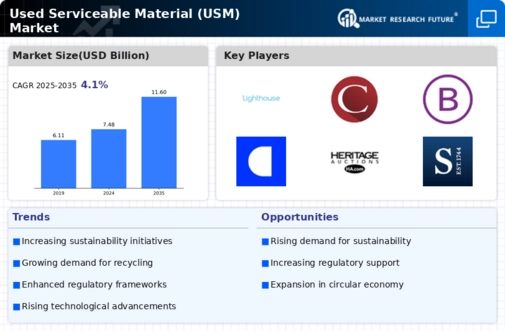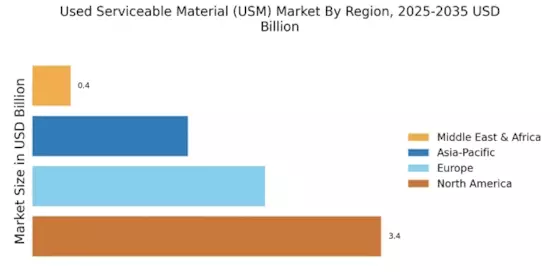The Used Serviceable Material (USM) Market is characterized by a dynamic competitive landscape, driven by the increasing demand for cost-effective solutions in the aerospace and defense sectors. Key players such as Boeing (US), Lockheed Martin (US), and Airbus (FR) are strategically positioned to leverage their extensive experience and technological capabilities. Boeing (US) focuses on enhancing its supply chain efficiency and sustainability initiatives, while Lockheed Martin (US) emphasizes innovation through advanced technologies and partnerships. Airbus (FR) is actively pursuing regional expansion and digital transformation to optimize its operations. Collectively, these strategies contribute to a competitive environment that is increasingly focused on operational excellence and technological advancement.
In terms of business tactics, companies are localizing manufacturing and optimizing their supply chains to enhance responsiveness and reduce costs. The market structure appears moderately fragmented, with several key players exerting considerable influence. This fragmentation allows for niche players to emerge, yet the collective strength of major companies shapes the overall market dynamics, fostering a competitive atmosphere that encourages innovation and efficiency.
In August 2025, Boeing (US) announced a strategic partnership with a leading technology firm to develop a new digital platform aimed at streamlining the management of used serviceable materials. This initiative is expected to enhance Boeing's operational efficiency and reduce waste, aligning with the growing emphasis on sustainability within the industry. The partnership signifies Boeing's commitment to integrating advanced technologies into its operations, potentially setting a new standard for the management of USM.
In September 2025, Lockheed Martin (US) unveiled a new initiative focused on the refurbishment and resale of used serviceable materials, targeting both military and commercial sectors. This move is indicative of Lockheed Martin's strategy to diversify its revenue streams while promoting sustainability. By capitalizing on the growing market for refurbished materials, the company positions itself as a leader in the circular economy, which may enhance its competitive edge in the USM market.
In July 2025, Airbus (FR) launched a comprehensive program aimed at increasing the traceability and transparency of its used serviceable materials. This initiative is designed to meet the rising regulatory demands and customer expectations for sustainability. By enhancing the visibility of its supply chain, Airbus (FR) not only strengthens its compliance but also builds trust with its customers, which could lead to increased market share in the USM sector.
As of October 2025, current competitive trends in the USM market are heavily influenced by digitalization, sustainability, and the integration of artificial intelligence. Strategic alliances are becoming increasingly vital, as companies seek to enhance their technological capabilities and operational efficiencies. The competitive landscape is likely to evolve, with a shift from traditional price-based competition towards differentiation through innovation, technology adoption, and reliable supply chain practices. This transition underscores the importance of adaptability and forward-thinking strategies in maintaining a competitive advantage in the USM market.


















Leave a Comment